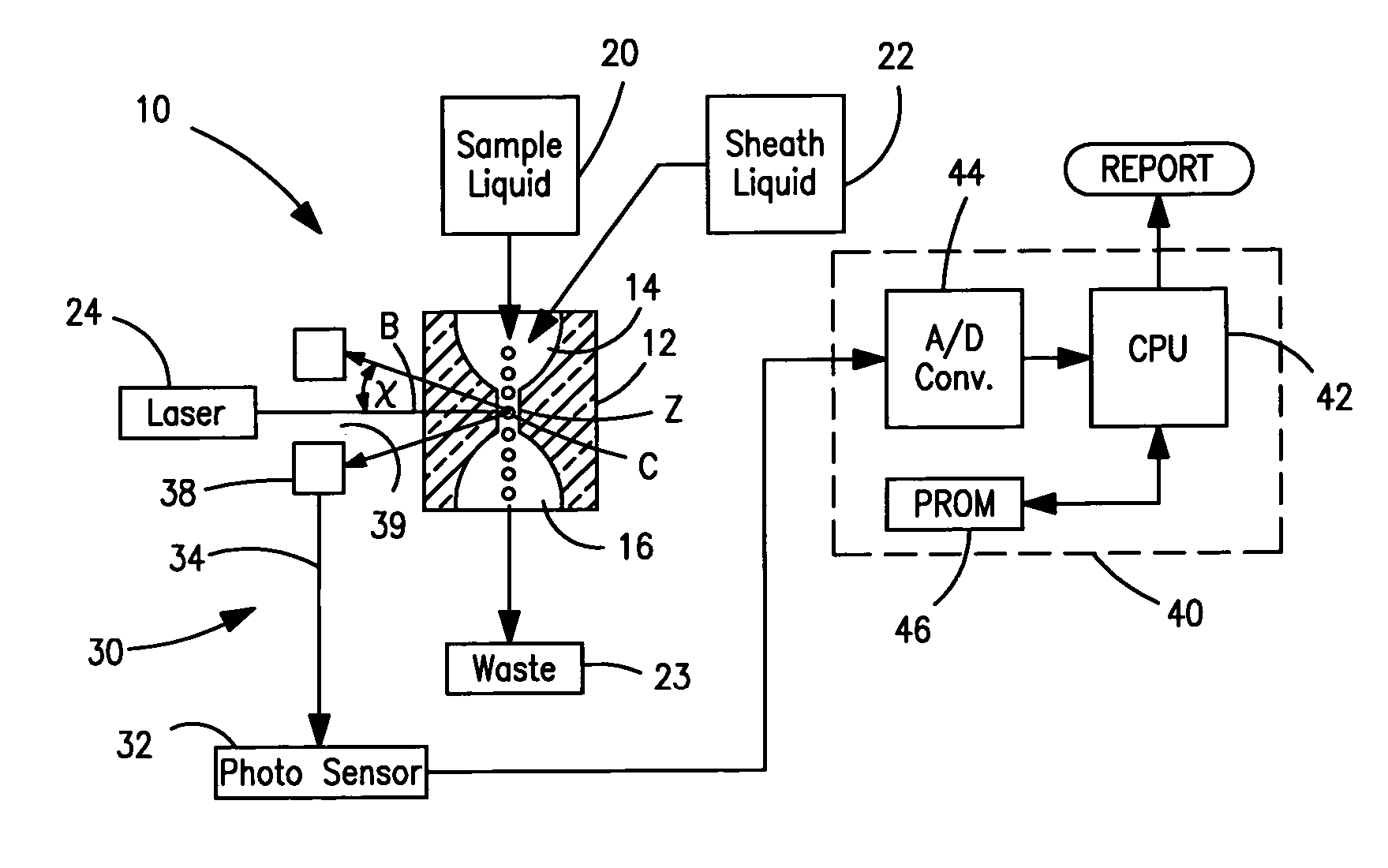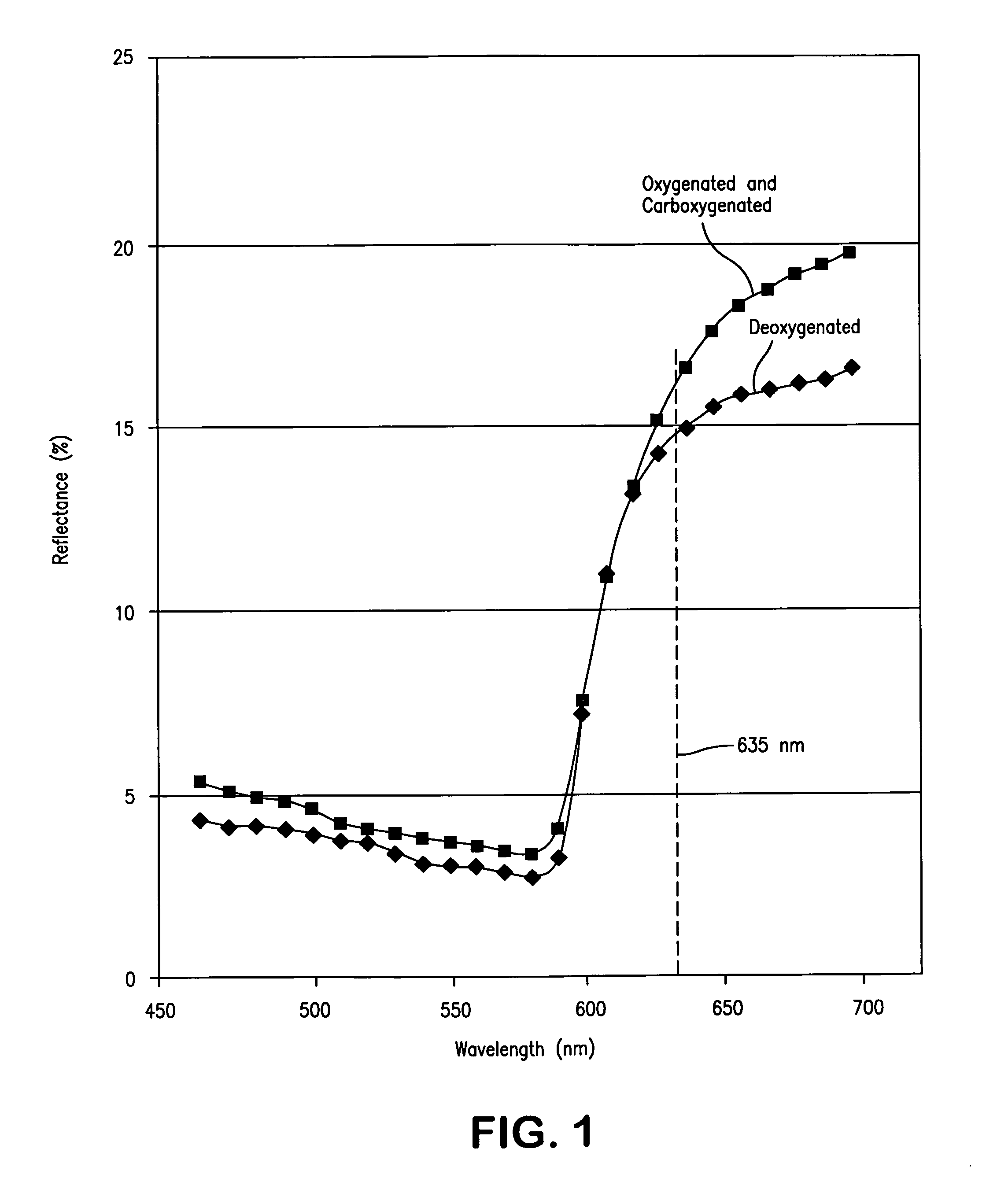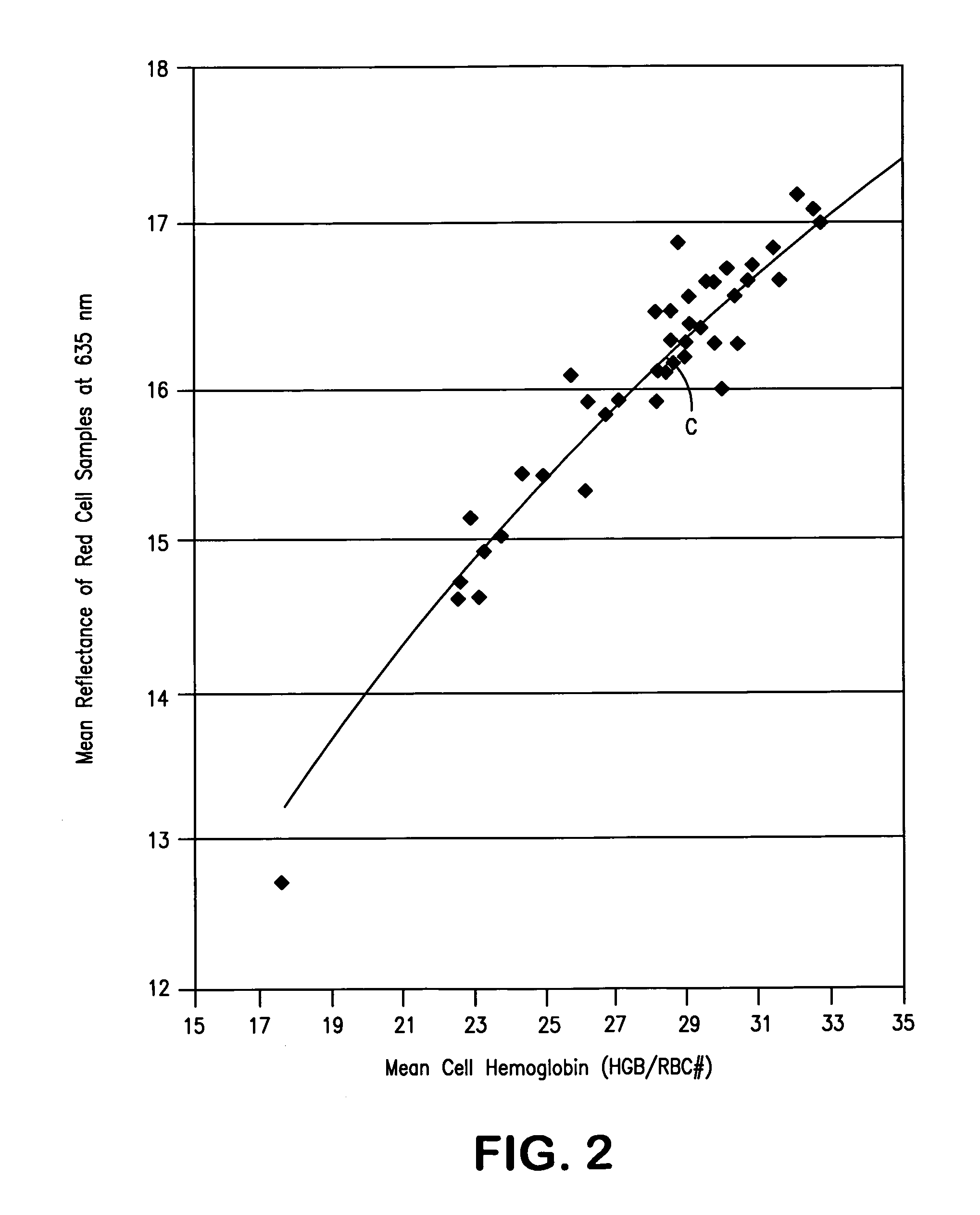Method and apparatus for measuring cell-by-cell hemoglobin
a cell-by-cell hemoglobin and method technology, applied in the direction of measurement devices, instruments, particle and sedimentation analysis, etc., can solve the problems of scatter intensities, complex interrelated optical measurements relating to volume and hc, and require a relatively complex and sophisticated optical system to implement, so as to achieve a simple and reliable method
- Summary
- Abstract
- Description
- Claims
- Application Information
AI Technical Summary
Benefits of technology
Problems solved by technology
Method used
Image
Examples
Embodiment Construction
[0019]In the normal circulation of whole blood through the human body, the constituent blood cells flow in single file through the alveolar capillaries of the lungs. The number of red blood cells (erythrocytes) predominate all other cells by a factor of about 1000:1. In a sample of whole blood, red blood cells exist typically in numbers of about 5 million cells per cubic microliter, although this number varies greatly due to various disease conditions. Within the membrane of each red cell, about 95% of the volume is occupied by water and hemoglobin molecules. As blood circulates through the lungs, the oxygen present in the alveolar capillaries diffuses through the cell membrane and acts to convert virtually all of the hemoglobin within the red cells to a relatively unstable molecular complex known as oxyhemoglobin. During this oxygenation process, the red blood cells become bright red in color. Because the association of the oxygen and hemoglobin molecules within the red cells is re...
PUM
| Property | Measurement | Unit |
|---|---|---|
| wavelength | aaaaa | aaaaa |
| wavelength | aaaaa | aaaaa |
| wavelength | aaaaa | aaaaa |
Abstract
Description
Claims
Application Information
 Login to View More
Login to View More - R&D
- Intellectual Property
- Life Sciences
- Materials
- Tech Scout
- Unparalleled Data Quality
- Higher Quality Content
- 60% Fewer Hallucinations
Browse by: Latest US Patents, China's latest patents, Technical Efficacy Thesaurus, Application Domain, Technology Topic, Popular Technical Reports.
© 2025 PatSnap. All rights reserved.Legal|Privacy policy|Modern Slavery Act Transparency Statement|Sitemap|About US| Contact US: help@patsnap.com



